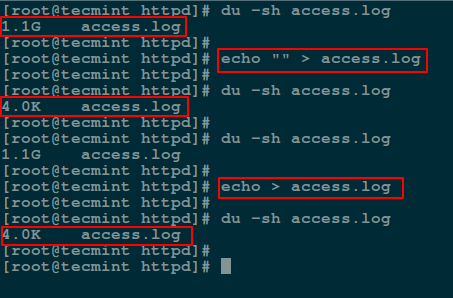

- SHELL SCRIPT CHECK ZERO BYTE FILE HOW TO
- SHELL SCRIPT CHECK ZERO BYTE FILE SOFTWARE
- SHELL SCRIPT CHECK ZERO BYTE FILE CODE
- SHELL SCRIPT CHECK ZERO BYTE FILE SERIES
SHELL SCRIPT CHECK ZERO BYTE FILE HOW TO
Let’s check out how to include double quotes in a string output.Ĭreate a script file named doublequotes.sh in the ~/opt directory, then copy and paste the script below to the doublequotes.sh file. The contents inside quotes are considered a string except for the \\ or ! symbols and variables. Escaping a character with the backslash symbol in a string will do the trick. Perhaps you want to include double quotation marks in your string output. These quotes play an important role while writing a shell script, but if incorrectly placed, the script will not work as intended. If you noticed in the previous scripts, string values were enclosed in double quotes ( " "), single ( ' ') quotes, and left quotes (). The echo command then prints out the exit status of the cat command. In the following example, the cat command tries to get the contents of a file ( myfile.txt) that doesn’t exist. To do that, read the value of the special variable $? by echoing out its value with the echo command. Within a Bash script, you can both read exit codes and set custom ones as well. In Bash, you can override these default exit codes and set your own. Exit codes are integers that indicate the status of a process, typically if it was successful or failed somehow.
SHELL SCRIPT CHECK ZERO BYTE FILE CODE
Getting and Setting Exit Codes in a Shell ScriptĪll processes in Linux exit with a specific code known as an exit code.


Copy and paste the script below to a script file named variable.sh, configure it as executable, and run it. Let’s test the special positional variables in a script. In that case, use special positional variables to set the strings’ position. Perhaps you’re trying to substitute strings based on a specific order. Special variables are just like other variables, except that you can’t assign values to them, as they are reserved for specific functions.

The environment variable is permanently accessible for all users in all Bash sessions and processes The environment variable is permanently accessible for the current user in all future Base sessions and processes The environment variable is only accessible for the current user in the current shell and processes
SHELL SCRIPT CHECK ZERO BYTE FILE SOFTWARE
You can see below that the kernel communicates between the hardware and software throughout the shell script workflow.Īpply Changes Made to /etc/environment File and Print the Environment Variable with its Valueīelow, you can see a comparison table to understand better the scope of setting your own environment variables. That input is further executed as you hit the Enter key, displaying the output on the terminal. Whenever a user opens up the terminal (a console to a shell), the shell issues a command prompt where you’ll type your input. A shell is a command language interpreter that executes commands read from the standard input device such as a keyboard or a file to execute programs, create files, etc. What is a Shell?īefore jumping into shell scripting, it’s necessary to understand what shell is. This tutorial uses an Ubuntu 18.04.5 LTS machine with sudo/administration rights. To follow along with this tutorial, it is necessary to have a remote SSH host. Running Command Inside a String with Left Quotes.Printing Special Characters in a String with Single Quotes.Printing Colored Output from a Shell Script.Requiring User Input in a Running Shell Script.Viewing File Names and Size via a For Loop.
SHELL SCRIPT CHECK ZERO BYTE FILE SERIES


 0 kommentar(er)
0 kommentar(er)
